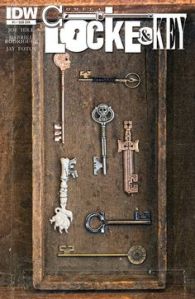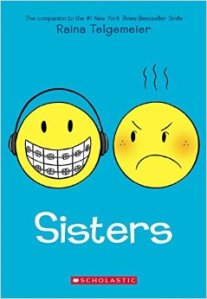While I was out of town last month, our 16-year old daughter, Sarah, had a reading emergency. She told me the story over dinner when I came home, “Mom, my English teacher assigned us an independent reading project.”
I leaned in, whole body listening, “Hmm. What are the guidelines for the project?”
Once a teacher, always a teacher. I can’t help it. I wanted to know how “independent” this independent reading project was.
Sarah ticked off the requirements, “It has to be a book we haven’t read…”
We’re good so far. That’s a reasonable expectation.
She continues, “The book has to be 200 pages long.”
Whew, The Catcher in the Rye just makes the cut at 224 pages. Sorry, Of Mice and Men, you’re too short. Arbitrary rules like this one communicate to kids that teachers think students are lazy and hate to read, and they go for the shortest books they can find. What about students’ personal desires or prior reading experiences?
True, some kids might pick the shortest books they can because they hate to read. You’re their English teacher. Help them. High school isn’t too late to discover reading. Ask Penny Kittle and Kelly Gallagher.
“And no graphic novels. She looked right at me when she said that, Mom.”
I sighed. Seriously, we’re still fighting this battle? Maus won a PULITZER in 1992. The only people who still believe that graphic novels aren’t “real” or “rigorous” reading reveal their own lack of reading experiences. Stephen Krashen and Terry Thompson put this misunderstood notion to rest long ago. Graphic novels provide reading gateways for many young readers. We’ve damaged a lot of boy readers over the years by scorning their comic book and magazine reading. Girls read comics, too. According to Market Beat, 47% percent of girls read comics. Sarah offers her idiosyncratic list of the following graphic novels and comics for your reading education:
American Born Chinese by Gene Luen Yang
Anya’s Ghost By Vera Brosgol
Babymouse and Squish by Jennifer L. Holm and Matthew Holm
The Complete Maus, 25th Anniversary Edition by Art Spiegelman
El Deafo by CeCe Bell
Friends with Boys by Faith Erin Hicks
In Real Life by Cory Doctorow and Jen Wang
Locke and Key by Joe Hill and Gabriel Rodriguez
The Olympians by George O’Connor
Scott Pilgrim by Bryan Lee O’Malley
Through the Woods by Emily Carroll
Tomboy: A Graphic Memoir by Liz Prince
The Walking Dead by Robert Kirkman and Tony Moore
“Everything Raina Telgemeier has written.”
Catch up on these:
Smile
Drama
Sisters
The Babysitters Club
“I read those because of RAINA, Mom. I never read those books.”
“What about Doug TenNapel? I know that you read Ghostopolis.”
“I read all of his stuff. Put him on there, too.”
Ghostopolis
Bad Island
Cardboard
Tommysaurus Rex
Sarah chose Libba Bray’s The Diviners for her independent reading project. All 608 glorious pages of it. Challenge accepted. Sarah’s a curious girl. She has strong opinions about things. She’s a sixteen-year-old. Don’t disdain her choices or attempt to define her. Reading or otherwise.
Yes, Sarah reads a lot of graphic novels. Sarah’s also read A Midsummer Night’s Dream, The Great Gatsby, Wuthering Heights, The Odyssey–all the canon fodder. I think she reads every book her teachers assign her to read. Sometimes, Sarah discovers that she appreciates these books. Other times, she reads an assigned book because she respects her teachers and does what she’s told. Engagement ratings? Mixed.
Sarah gave her boyfriend a copy of To Kill a Mockingbird for Christmas because he somehow, “dodged reading it in 9th grade.” For some reason, Sarah isn’t willing to let him slide on Mockingbird. I get it. Her father wouldn’t let me slide on Sandman or Watchmen, either.
Reading shapes and transforms who we become–both as readers and as human beings. Encouragement and opportunities to choose what they read have lasting benefits for kids. **Self-selected reading:
- Allows children to value their decision-making ability.
- Fosters their capacity to choose appropriate reading material.
- Builds confidence and a feeling of ownership.
- Improves reading achievement.
- Encourages lifelong readers.
I understand the role that reading classic literary works plays in Sarah’s education. She’s building a social and cultural identity, but she’s developing her personal identity, too. She feeds all of her identities with the books she reads–the ones she’s assigned to read and the ones she chooses on her own. Not all of her reading influences come from school. She’s building her own canon.
Sarah is a student. She’s also a singer. A gamer. A cheese Danish and cat lover.
She’s our comic book girl.
And she’s her own girl. It’s a marvelous thing to see.
*(Johnson, D., & Blair, A., 2003)





After 13 years teaching English at the secondary level, I just discovered The Book Whisperer. So much of what you wrote resonated with my teaching experiences and personal passions. Independent reading has always been a hallmark of my classroom, as my extensive classroom library demonstrates. I look forward to reading Reading in the Wild
However, my challenge at the high school level is introducing students to “the canon.” If everything my students read is self-selected, they rarely read outside contemporary fiction titles. How do I broaden their reading so they can meet the common core standards, such as “Demonstrate knowledge of eighteenth-, nineteenth-, and early-twentieth-century foundational works of American literature, and how two or more texts
from the same period treat similar themes or topics”?
Also, how do you broaden students’ nonfiction reading beyond the accessible memoir so they can “analyze seventeenth-, eighteenth-, and nineteenth-century foundational U.S. documents of historical and literary significance for their themes, purposes, and rhetorical features”? My students aren’t going to read The Declaration of Independence or Lincoln’s Second Inaugural Address on their own.
For now, I emphasize independent reading as the cornerstone of my instruction, but still fall back on whole-class novels or other common texts to build cultural literacy. How do I balance these approaches at the secondary level?
Students should read some texts with the class, some text with groups like book clubs, and some books independently. I suggest Penny Kittle’s Book Love and Kelly Gallagher’s In the Best Interest of Students for HS voices and ideas about independent reading at your level, as well as balancing standards demands.
Thanks for the prompt response and for affirming what I already do in my classroom. I’m familiar with Gallagher’s work, but I just ordered Penny Kittle’s book. How have I not heard of her before?